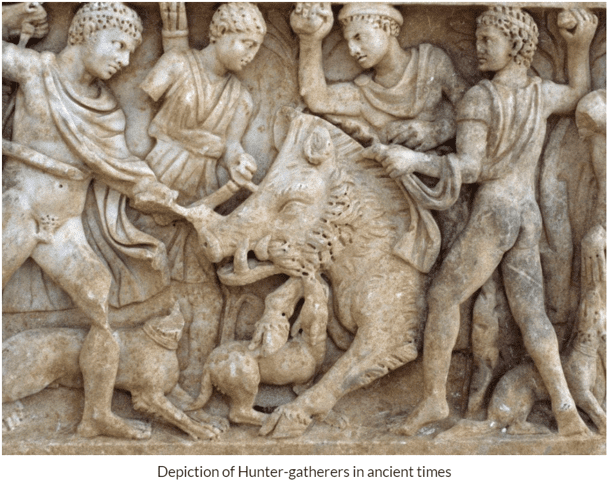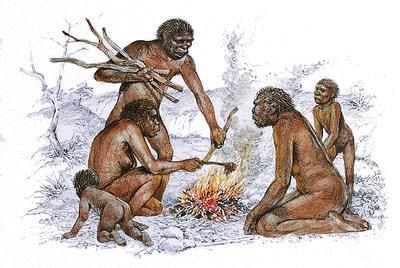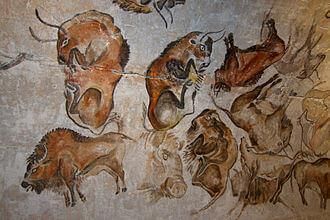Class 6 Exam > Class 6 Notes > Chapter Notes: On the Trail of the Earliest People
Class 6 History Notes - On the Trail of the Earliest People
Introduction
- Over millions of years, human life has developed. Men were originally hunters and gatherers of food.

- They harvested fruits, nuts, and seeds as well as hunting wild animals and fish.
Why did the Earliest people lead a Nomadic life?
- Resources such as plants and animals would run out if they stayed in one place.
- Plants produce different fruits at different times of the year. As a result, man had to move in quest of these in accordance with the seasons.
- People had to move to wherever there was water.
How do we know about Early People?
- Several tools used by hunter-gatherers have been discovered by archaeologists/
- Tools were made of stone, wood, etc.
- Tools were used to cut meat, chop fruits, etc.
- Wood was used to make huts and firewood.
Where did Early Man Live?
- Early man lived near sources of water.
- They lived in places where stones were found and people made tools.
- The place was called factory site.
 Early man life
Early man life - The factory sites were found near discarded blocks of stone.
- These were known as habitation-cum-factory sites.
Question for Chapter Notes: On the Trail of the Earliest PeopleTry yourself: Why did early people lead a nomadic life?View Solution
Stone Age
You have read that hunter-gatherers lived during the prehistoric period. People in this age used stones for making tools. Due to this, this period is also called the Stone Age.
The Stone Age is divided into three phases:
- Palaeolithic or Old Stone Age
- Mesolithic or Middle Stone Age
- Neolithic or New Stone Age
Making Stone Tools
Two procedures were used to create stone tools: stone on stone and pressure flaking.
Man Discovers Fire
- Fire was one of man's most important discoveries by accident.
- Over time, man learned to employ fire in a variety of ways.
- It was utilised to keep warm in the winter and in the art of cooking.
Early Rock Paintings
- Man early caves had paintings on the walls.
- These were found in M.P. and Southern U.P.
- Early man’s painted and what they felt in these paintings.
- They depicted men hunting, women grinding, children jumping, etc.
 Early rock painting
Early rock painting
The Deccan
- Paleolithic sites have been found in the Deccan.
- Some major sites are Chirki - Nevasa in Maharashtra.
Kurnool in Andhra Pradesh and Hungsi in Karnataka:
- Rivers like Godavari, Krishna and Tapti drained the region.
- Large number of Paleolithic tools made from stone have been found along the river.
- Archaeologists are studying these tools carefully to understand the life of early man.
- Bones, horns and tusks of animals like elephant and wild ox have been found.
FAQs on Class 6 History Notes - On the Trail of the Earliest People
| 1. What is the significance of studying the earliest people? |  |
Ans. Studying the earliest people helps us understand our origins and how we evolved over time. It also helps us understand how early humans adapted to their environment, developed tools and technology, and communicated with each other.
| 2. How do anthropologists and archaeologists find evidence of the earliest people? |  |
Ans. Anthropologists and archaeologists find evidence of the earliest people by excavating sites where early humans lived, worked, and hunted. They look for artifacts such as tools, bones, and pottery, as well as evidence of fire and shelters.
| 3. What is the difference between the Paleolithic and Neolithic periods? |  |
Ans. The Paleolithic period, also known as the Old Stone Age, lasted from about 2.6 million years ago to 10,000 BCE. During this time, early humans lived as hunter-gatherers and used stone tools. The Neolithic period, also known as the New Stone Age, lasted from about 10,000 BCE to 4,500 BCE. During this time, early humans began to settle in one place, domesticate animals, and develop agriculture.
| 4. How did early humans adapt to their environment? |  |
Ans. Early humans adapted to their environment by developing tools and technology to help them hunt, gather food, and build shelters. They also learned to use fire, which provided warmth, light, and protection against predators.
| 5. What can we learn from the cave paintings created by early humans? |  |
Ans. The cave paintings created by early humans provide us with insight into their lives, beliefs, and culture. They depict animals, hunting scenes, and human figures, as well as abstract symbols and shapes. These paintings also show that early humans had a sense of art and creativity.
Related Searches















